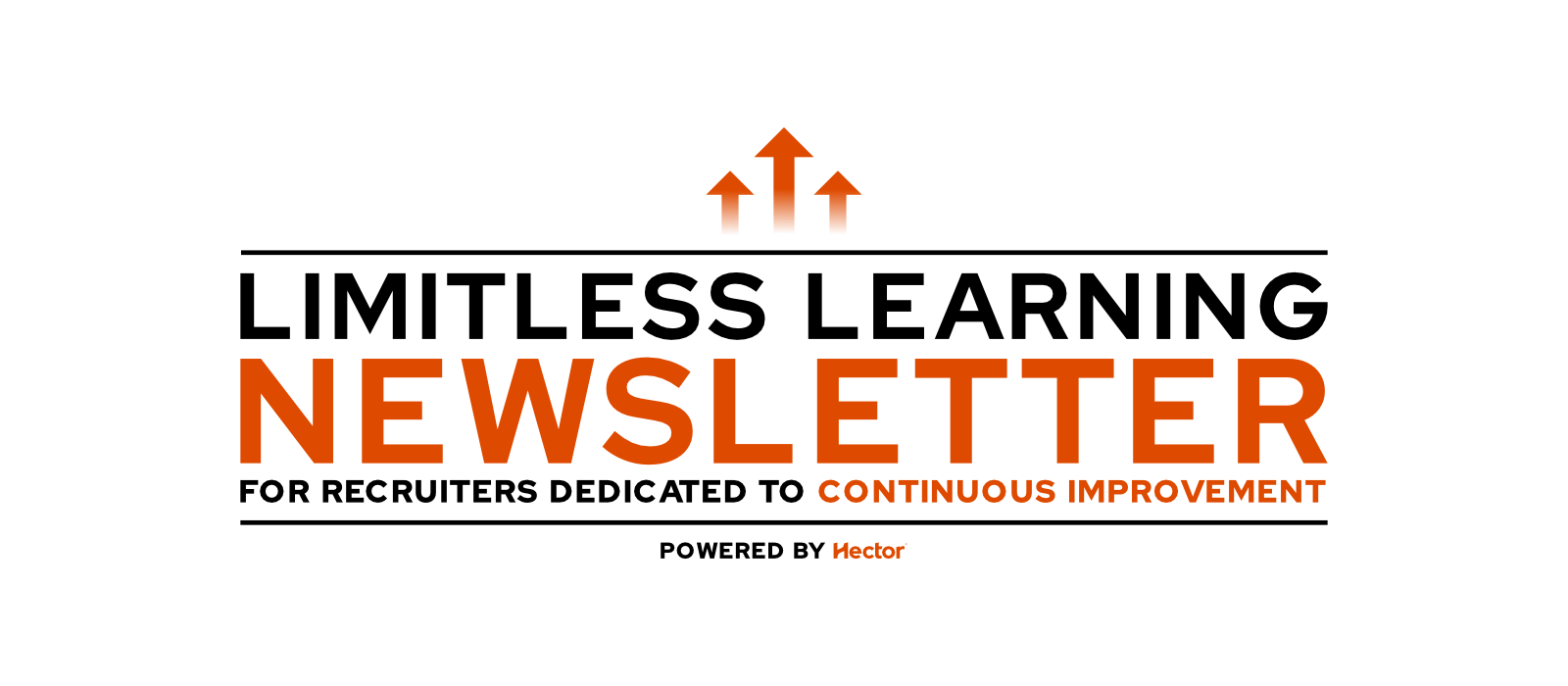What do you need to do to become a world-class 360 recruiter? | Technical edition
This edition is for all the 180 recruiters out there who are transitioning into a 360 role – we’ve got you covered.
The thought of moving from 180 to 360 can feel pretty daunting – and in the first instances, it always is.
We always seem to create a huge gap between what it means to be a 180 or a 360 recruiter, when in reality it’s the same thing: your clients are your candidates and your candidates are your clients.
The chances are, you’re incredible at candidate management – that’s why you’re a 180 recruiter. The technical skills that you’ve acquired to be able to source rare talent are invaluable as a 360 recruiter.
In fact, it’s probably arguable that you’ll be a better 360 recruiter because you’ve had the opportunity to really pour time and energy into being a stellar 180 recruiter first.
We’re going to break down the technical things you need to “get good” at to become a world-class 360 recruiter.
The obvious one… business development
This goes without saying, but we needed to give it an honourable mention anyway.
Business development is what makes a 360 recruiter, well, a 360 recruiter.
Technically, being great at BD takes a lot of time, but here are a couple of tips from us to make your BD calls stand out.
Make that introduction short, sharp, and personable
Elevator pitch.
No longer than 20 seconds – who you are, what you do, why you want to talk to them and then finish with a question to engage them in conversation.
Don’t even think of them as a client – think of them as a candidate if that gives you less anxiety!
Create a hook in the conversation
Just like you would entice a candidate for a job role, what is the hook for the client to continue talking to you?
Research their company, drop a competitor’s name in the conversation to grab their attention.
Don’t go into a BD call without any prior knowledge – you wouldn’t try to screen a candidate without a CV.
Time management & prioritisation
A big thing that I’ve heard 360 recruiters struggle with is time management and prioritisation, and essentially, your time is going to be cut in half now that you’ve moved from 180 to 360.
Time management is a technical skill, and it can be your superpower as a recruiter if you can master it.
This doesn’t necessarily mean that you have to be militant with every hour of your time, but prioritise your clients like you’d prioritise your candidates – what is going to give you the best return? Who is reliable? Who isn’t?
You need to use the same techniques you’d use to prioritise candidates just like you would for clients.
We’ve spoken in the past about creating ways to section your clients into “A”, “B”, and “C” clients.
Having a plan and market mapping
Just like you’d map a candidate/talent pool, you can do the exact same for your business development.
A great way of thinking about this is looking at places where you’ve placed current candidates of yours and utilising these connections first – who can they put you in contact with? What companies do they typically tend to hire from?
You can then start to build out a very targeted BD list: the more niche the better.
Think of the top 20 companies that you know hire talent (or places that you have placed candidates before) and use that as your starting point. Map out the C-Suite, key hiring managers, and talent acquisition and use that as your baseline.
With BD people tend to overcomplicate it – you don’t need 200 companies; otherwise you’ll never feel like you’re making any process. Start with 20 and then build out your list from there.
Create a stellar follow-up strategy that you can commit to for those 20 companies and set yourself a time limit and some goals that you want to hit – you’ll be surprised at the success you can see and the relationships you’ll start to build!
It’s not going to happen overnight. Focus on creating quality conversation and laying down the foundations.
TIP: It sounds old-school, but create a visual way (even a spreadsheet) that enables you to track your progress.
Although you should be using your CRM/database, you want to make BD a fun and engaging activity where you can see your successes.
You know what I’m going to say – personal branding!
It’s time to start putting some more time into your LinkedIn and growing your network. Not just posting about jobs, but posting market insight that your audience is going to care about.
Whether it’s joining LinkedIn groups, attending online events, writing your own content or simply just being more active, you need to ensure that you are investing time into your online brand as a recruiter so you can start building a solid client and candidate network.
Your actionable takeaways ✅
Here are your actionable steps to implement & apply what we have shared with you today.
1. Shorten your introduction to 20 seconds or less and make it personal.
2. Create a hook in the conversation to grab the client’s attention.
3. Prioritize clients like you would prioritize candidates by using techniques such as sectioning clients into “A”, “B”, and “C” categories.
4. Map out a targeted list of companies for business development by utilizing connections from current candidates and focusing on the most niche companies.
5. Create a follow-up strategy with goals and track your progress.
6. Invest time into your online brand as a recruiter by creating market insight posts, attending online events, and being active on LinkedIn.

